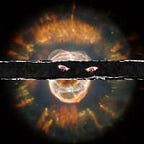Themes and eras in the Discworld
More literary criticism
If you ask people who the main character in the Discworld series is they will look at you funny. There are loads of main characters in the series, that’s part of the appeal. Normally though you can get someone to break and say of course Esme Weatherwax is the main character, or Sam Vimes is, or even Rincewind. Each of these answers is wrong. I would say until The Truth there isn’t a main character of the Discworld. The only main thread weaving through the earlier books is a love of language; a full blown love affair with what words can do. In the first two thirds of the series, up until The Truth the main theme uniting the books is Language. From The Truth onwards that changes though and Ankh-Morpork, the city, becomes what is essential the principle character (for simplicity I’m excluding the Tiffany Aching books).
The shift from Language to Ankh-Morpork is what helps the Discworld get over its third act problem. Up until Men At Arms the repetition of plot devices and narrative arcs works well. Anyone who reads the books know there was this incredible love of language purely for language’s sake. The books are so good that you don’t mind that there’s been another plot to overthrow the Patrician, or that a vizier is undermining a desert kingdom again, or that death is on holiday again because the characters are still growing and the jokes all still land.
But from Soul Music onwards the stories start to stagnate. The jokes are all still good but the love of language isn’t enough to hold the series together, it begins to miss something new to hang the plots on. Rincewind runs away from things in Australia, Esme Weatherwax has to be stern again, Ankh-Morpork needs a king again and only Sam Vimes is grumpy enough to stop it, these all only work because Terry Pratchett writes so well and people are so in love with the characters.
It takes the introduction of a new character to reinvigorate the series and that character is Ankh-Morpork. Its weird to think of a city as a character, but no weirder than anything else on the Disc. This innovation is what helps the Discworld carry on producing fantastic books after the initial world building and character groups have been created. Throwing those characters at a new antagonist, Ankh-Morpork opened up a whole vista of new stories.
In The Truth the city modernises and a public sphere emerges, in Thud! the city watch have to deal with multiculturalism, just as much as with a plot, in Night Watch Ankh-Morpork gets a living history, in Monstrous Regiment it gets great power status again again its frankly pitiful outing in Jingo, in Going Postal it gets a post office, in Making Money a bank, in Unseen Academicals a street culture which isn’t (just) fighting, in Raising Steam it even gets an industrial revolution (and that book only really weakens when the action leaves Ankh-Morpork. Even in Snuff, ostensibly set outside Ankh-Morpork its values start to colonise the countryside.
The period from The Truth onwards (and really germinating with Vetinari in Guards! Guards! and the guild system) produces a city which has a life complex enough to provide material for another ten books. This helped cover for the fact that joy of language declined over the course of the last third of the series as Alzheimer robbed Pratchett of his edge. The later books still have moments that shine, but lack the density of brilliance of earlier books. Ankh-Morpork was the fertile loam in which the last third of the Discworld series grew, it is sad that we didn’t get the chance to see its storylines repeat too.
